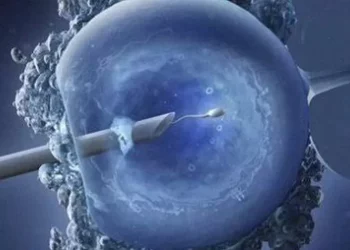Infertility is a significant concern for many individuals and couples. One of the less commonly discussed causes of infertility is the retained placenta. The retained placenta occurs when parts of the placenta or membranes remain in the uterus after childbirth. This condition can lead to various complications, including infections and heavy bleeding. In this article, we will explore the relationship between retained placenta and infertility, discussing the causes, symptoms, diagnosis, and treatment options available.
Understanding Retained Placenta
The placenta is a crucial organ that develops during pregnancy, providing oxygen and nutrients to the growing fetus while removing waste products from the baby’s blood. After childbirth, the placenta usually detaches from the uterus and is expelled through the birth canal. When the placenta does not detach and remains in the uterus, it is referred to as retained placenta.
Types of Retained Placenta
There are three main types of retained placenta:
Placenta Adherens: This is the most common type of retained placenta. It occurs when the placenta adheres too strongly to the uterine wall, making it difficult to detach.
Trapped Placenta: This happens when the placenta detaches from the uterine wall but becomes trapped behind a closed cervix.
Placenta Accreta: This is a more severe form of retained placenta, where the placenta attaches deeply into the uterine wall and sometimes even into the surrounding organs.
Causes of Retained Placenta
Several factors can contribute to the retained placenta, including:
Weak Uterine Contractions: After childbirth, the uterus needs to contract to expel the placenta. Weak contractions can lead to the placenta remaining in the uterus.
Abnormal Placental Attachment: Conditions such as placenta accreta can cause the placenta to attach abnormally to the uterine wall.
Previous Uterine Surgery: Women who have had previous surgeries on the uterus, such as a cesarean section, are at a higher risk of retained placenta.
Preterm Birth: Preterm delivery can increase the risk of retained placenta.
Infection: Uterine infections can interfere with the normal expulsion of the placenta.
Symptoms of Retained Placenta
The symptoms of retained placenta can vary, but common signs include:
Heavy Bleeding: One of the most obvious signs is excessive bleeding after childbirth.
Foul-Smelling Discharge: A strong, unpleasant odor from vaginal discharge can indicate infection.
Severe Pain: Intense abdominal or pelvic pain can be a symptom.
Fever and Chills: These are often signs of an infection resulting from retained placenta.
Diagnosis of Retained Placenta
Diagnosing retained placenta involves a combination of medical history, physical examination, and imaging techniques:
Medical History: The doctor will ask about the patient’s symptoms and any previous history of retained placenta or uterine surgery.
Physical Examination: A pelvic exam can help determine if the placenta or fragments are still inside the uterus.
Ultrasound: An ultrasound can provide a clear image of the uterus and help identify any retained placental tissue.
Complications of Retained Placenta
If left untreated, retained placenta can lead to several complications that may impact fertility:
Infection: Retained placenta can cause infections such as endometritis, which can damage the uterine lining and affect future fertility.
Heavy Bleeding: Severe blood loss can lead to anemia and other complications, requiring medical intervention.
Scarring and Adhesions: Surgical removal of retained placenta can lead to scarring and adhesions in the uterus, which can affect fertility.
Asherman’s Syndrome: This condition involves the formation of scar tissue in the uterus, which can lead to infertility and recurrent pregnancy loss.
Retained Placenta and Infertility
While not all cases of retained placenta lead to infertility, the potential complications associated with it can impact a woman’s ability to conceive and carry a pregnancy to term. Understanding the mechanisms through which retained placenta can cause infertility is crucial.
Endometrial Damage and Scarring
One of the primary ways retained placenta can cause infertility is through damage to the endometrial lining. The endometrium is essential for embryo implantation. If retained placental tissue causes an infection or requires surgical removal, the resulting damage can impair the endometrial lining’s ability to support implantation.
Asherman’s Syndrome
As mentioned earlier, retained placenta can lead to Asherman’s syndrome, characterized by intrauterine adhesions and scarring. This condition can obstruct the uterine cavity, preventing embryo implantation or causing recurrent miscarriages.
Chronic Infections
Retained placenta can result in chronic uterine infections. Chronic infections can create an inhospitable environment for embryo implantation and development, leading to infertility. Additionally, chronic inflammation can damage the fallopian tubes, preventing the sperm from reaching the egg or the fertilized egg from reaching the uterus.
Hormonal Imbalances
In some cases, retained placenta can interfere with the normal postpartum hormonal balance. This disruption can affect ovulation and the menstrual cycle, making it more difficult for a woman to conceive.
See Also: Can Diabetes Cause Infertility?
Diagnosis and Treatment of Retained Placenta-Related Infertility
Addressing infertility caused by retained placenta involves a multi-faceted approach, starting with accurate diagnosis and appropriate treatment.
Diagnostic Steps
Medical History and Physical Examination: A thorough medical history and pelvic examination are crucial in diagnosing the potential impacts of retained placenta on fertility.
Imaging Techniques: Ultrasound and hysteroscopy are commonly used to assess the uterine cavity and identify any adhesions, scarring, or retained tissue.
Hormonal Tests: Assessing hormone levels can help determine if there are any imbalances affecting ovulation and menstrual cycles.
Treatment Options
The treatment of infertility related to retained placenta focuses on addressing the underlying issues and restoring normal uterine function.
Surgical Intervention
Hysteroscopy: This minimally invasive procedure allows the surgeon to directly visualize and remove any retained placental tissue, adhesions, or scar tissue.
Dilation and Curettage (D&C): In cases where hysteroscopy is not possible, a D&C procedure may be performed to remove retained tissue.
Antibiotic Therapy
Infections: If there is an infection present, antibiotics are prescribed to treat it. Clearing the infection is crucial to prevent further damage to the uterus.
Hormone Therapy
Hormonal Imbalances: Hormone therapy may be recommended to regulate menstrual cycles and support ovulation.
Fertility Treatments
In cases where natural conception is difficult, assisted reproductive technologies (ART) such as in vitro fertilization (IVF) may be considered. IVF can bypass some of the issues related to uterine scarring or damage by allowing fertilization to occur outside the body.
Preventing Retained Placenta and Its Complications
Preventing retained placenta and its complications is essential for maintaining reproductive health. Here are some strategies to reduce the risk:
Proper Management During Childbirth
Active Management of the Third Stage of Labor: This involves administering medications to help the uterus contract and expel the placenta promptly.
Manual Removal: In cases where the placenta does not deliver naturally, manual removal by a trained healthcare provider may be necessary.
Monitoring and Follow-Up
Postpartum Checkups: Regular postpartum checkups can help detect any retained placental tissue early and address it before complications arise.
Awareness of Symptoms: Educating women about the signs and symptoms of retained placenta can prompt them to seek medical attention promptly.
Conclusion
Retained placenta is a serious condition that can lead to various complications, including infertility. Understanding the causes, symptoms, and treatment options is crucial for preventing and managing this condition. While not all cases of retained placenta result in infertility, the potential for endometrial damage, infections, scarring, and hormonal imbalances makes it a significant concern for reproductive health. Early diagnosis and appropriate treatment are essential for restoring normal uterine function and improving the chances of conception. By taking proactive steps during childbirth and being aware of the symptoms, women can reduce the risk of retained placenta and its associated complications.
Related Links:



























